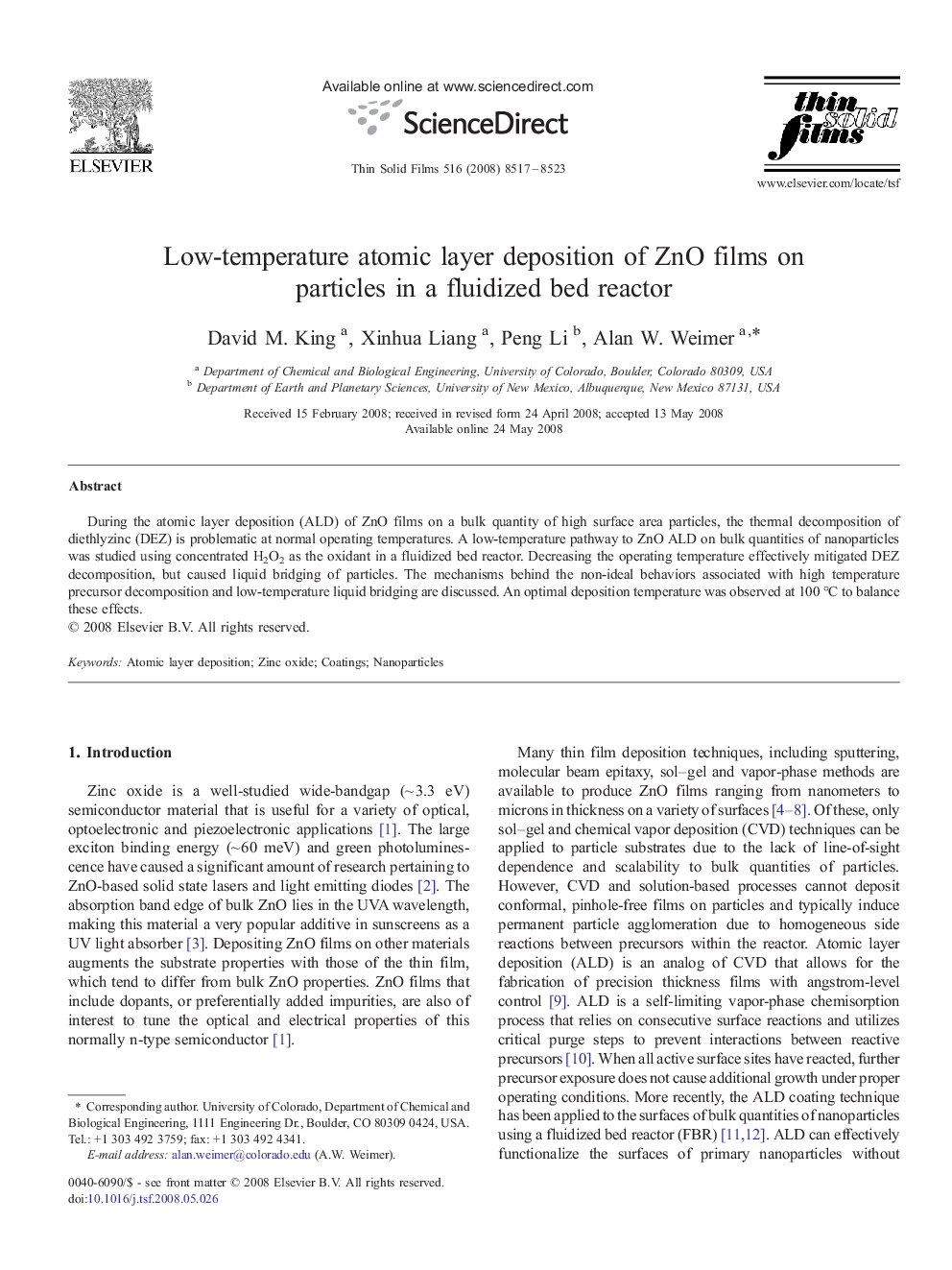| Article ID | Journal | Published Year | Pages | File Type |
|---|---|---|---|---|
| 1672072 | Thin Solid Films | 2008 | 7 Pages |
Abstract
During the atomic layer deposition (ALD) of ZnO films on a bulk quantity of high surface area particles, the thermal decomposition of diethlyzinc (DEZ) is problematic at normal operating temperatures. A low-temperature pathway to ZnO ALD on bulk quantities of nanoparticles was studied using concentrated H2O2 as the oxidant in a fluidized bed reactor. Decreasing the operating temperature effectively mitigated DEZ decomposition, but caused liquid bridging of particles. The mechanisms behind the non-ideal behaviors associated with high temperature precursor decomposition and low-temperature liquid bridging are discussed. An optimal deposition temperature was observed at 100 °C to balance these effects.
Related Topics
Physical Sciences and Engineering
Materials Science
Nanotechnology
Authors
David M. King, Xinhua Liang, Peng Li, Alan W. Weimer,
